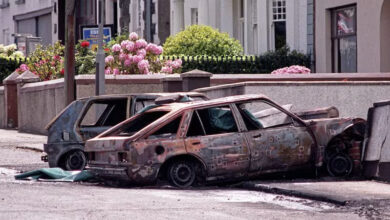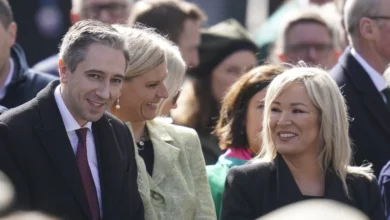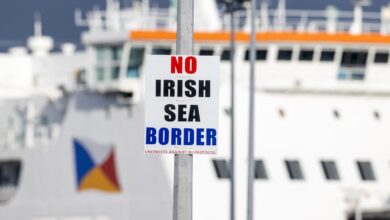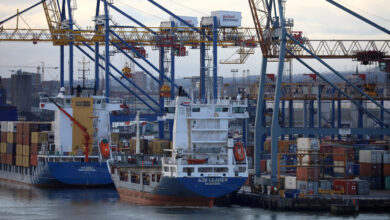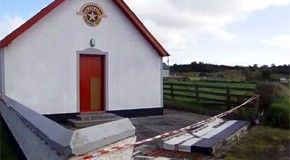L’immorale “turismo del conflitto” a Belfast
Belfast’s immoral ‘conflict tourism’
by Chris Jenkins
Buses drive into Belfast to allow tourists to gape at the massive walls and sites of bombings. This is simply exploitation
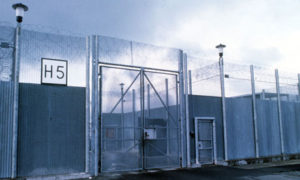 Visit Northern Ireland. Come to Belfast and see our magnificent city – rejuvenated, regenerated and re-energised. Take a walk through the streets in the shadows of the division walls. Why not stop to get your photo taken beside a mural of men in balaclavas? If you really want, why not write a message of hope and peace on one of our walls, a truly symbolic sign of human solidarity?
Visit Northern Ireland. Come to Belfast and see our magnificent city – rejuvenated, regenerated and re-energised. Take a walk through the streets in the shadows of the division walls. Why not stop to get your photo taken beside a mural of men in balaclavas? If you really want, why not write a message of hope and peace on one of our walls, a truly symbolic sign of human solidarity?
It is surprising that given the lack of humility in Northern Ireland’s exploitation of conflict, that an advertising campaign using the language above has not been launched yet. Tourism in Northern Ireland has rocketed within the last decade. The continued perception of increased stability and relative peace has attracted people from all over the world to see the many things that Northern Ireland should and does advertise to the world – the Giant’s Causeway, the Antrim glens, the Fermanagh lakes.
However, there is something deeply immoral about the rapidly expanding “conflict tourism” sector. Buses drive into the heart of inner city Belfast to allow tourists to gape at the massive walls dividing Belfast’s communities – murals depicting violence. Tourists take photos of the division lines that are not consigned to history, but are a part of living Belfast: children play football against the walls that tourists flock to. The places and the people themselves have become a spectacle, an attraction.
If this were history perhaps it would be more acceptable – but it’s not. These lines are still a very real part of everyday life for communities in Northern Ireland. Our politicians may say otherwise – that we are now at peace, and that nothing will destabilise our progress – but divisions aren’t removed.
As a country, we have come to realise the financial gains that can be made by marketing our conflict while also exaggerating the “stability” of Northern Ireland; painting a picture of those who dissent as being in a vast minority with no support whatsoever. The reality is manipulated, history exploited.
An example is the 1993 Shankill bomb that killed 10 people. Touring companies make money from that tragedy; tourists stand at the site of the bomb and take photos. The residents of the Shankill Road carry on, the money doesn’t filter down. The process passes them by.
Just last week Peter Robinson, Northern Ireland’s first minister, described the redevelopment of the Maze prison site (infamous for housing political prisoners during the Troubles) as being a “mecca for tourists”. The Maze/Long Kesh site needs a role within our remembrance process, but not a commercial role. The proposed “conflict resolution centre” for the site (at a cost of £20m) is not just another example of politicians U-turning all over the place, but also of the entire trend of ethics being sidelined for supposed financial gain.
I am not against tourism – quite the opposite in fact. But it seems to me that aspects of the current rebranding of Belfast are not only highly immoral, but also detract from the reality and the severity of our history. We need remembrance and we need reflection – such things will aid our reconciliation as a society. But we don’t need the exploitation of our conflict.

